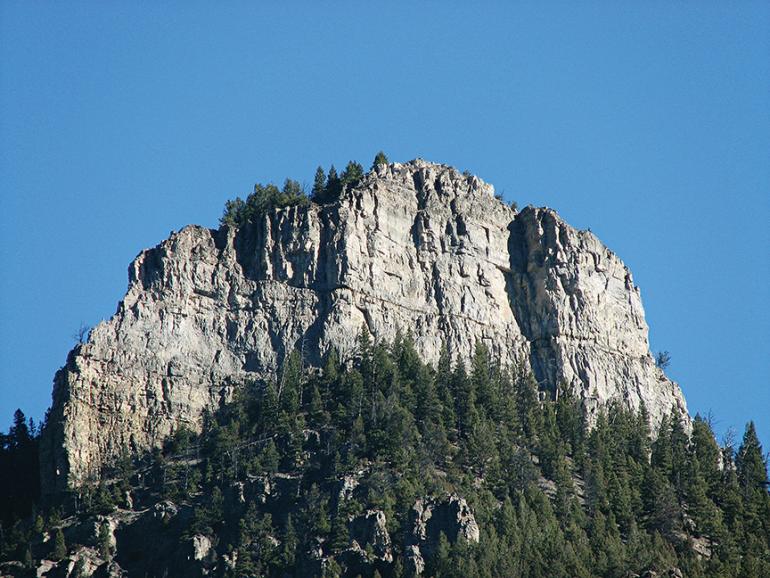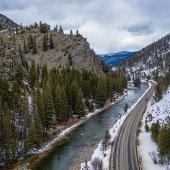Castle in the Sky
Exploring Gallatin Canyon's geology.
Summer has returned at last: leaves on trees, sunshine after dinner, and melting mountain snow. Hiking in the upper elevations is once again an option. A beautiful hike with a dramatic finish is Storm Castle Peak, south of Bozeman in the Gallatin Range. An added bonus is the interesting geology that can be enjoyed on the drive there.
Driving from Bozeman and then south on Hwy. 191 traverses rich layers of gravel and mud that flowed from ancient streams. Soon, you’ll reach the narrow entrance to Gallatin Canyon. The distinctive V-shaped canyon indicates that rushing water carved out this gorge, not a glacier. If a glacier had flowed through the main drainage, the canyon would be a well defined U-shape. However, glaciers made their marks on both sides of the canyon and left small U-shaped tributary valleys. Also, the glacial outflow (melting water and debris rushing ahead of a glacier) contributed to the water in the main canyon, as well as depositing huge boulders in sections of the Gallatin River.
Upon entering the canyon, look for layers or swirling patterns of light and dark rock on the sides of the cliffs. This is Precambrian gneiss or exposed basement rock. As the name implies, basement rock is the oldest rock and generally buried under thousands of feet of other layers. The most familiar occurrence of exposed basement rock is the Grand Canyon in Arizona. The Gallatin Range, however, was formed by the older layers being bent, folded, and forced upward.
Storm Castle Peak is made of a younger rock, a contrasting pale limestone of the Mississippian Age. Limestone consists of the skeletal remains of ancient sea life that produced calcium carbonate, the main ingredient in Rolaids, believe it or not. In other regions, exposed limestone can be hard to find due to its dissolvability in acidic rainwater. However, our drier climate and alkaline soil means our Montana limestone is still around and highly visible in places, such as Storm Castle.
Storm Castle is 7,170 feet high and the trail is approximately 2.5 miles to the summit, boasting a 2,300-foot elevation gain. The punishment to your calves is worth it, however, as the 360-degree views are spectacular. Also at the top, a natural erosion of the limestone has created picture-frame rock, a lovely way to capture the surrounding mountains.
Patti Albrecht owns Earth’s Treasures in Bozeman.











